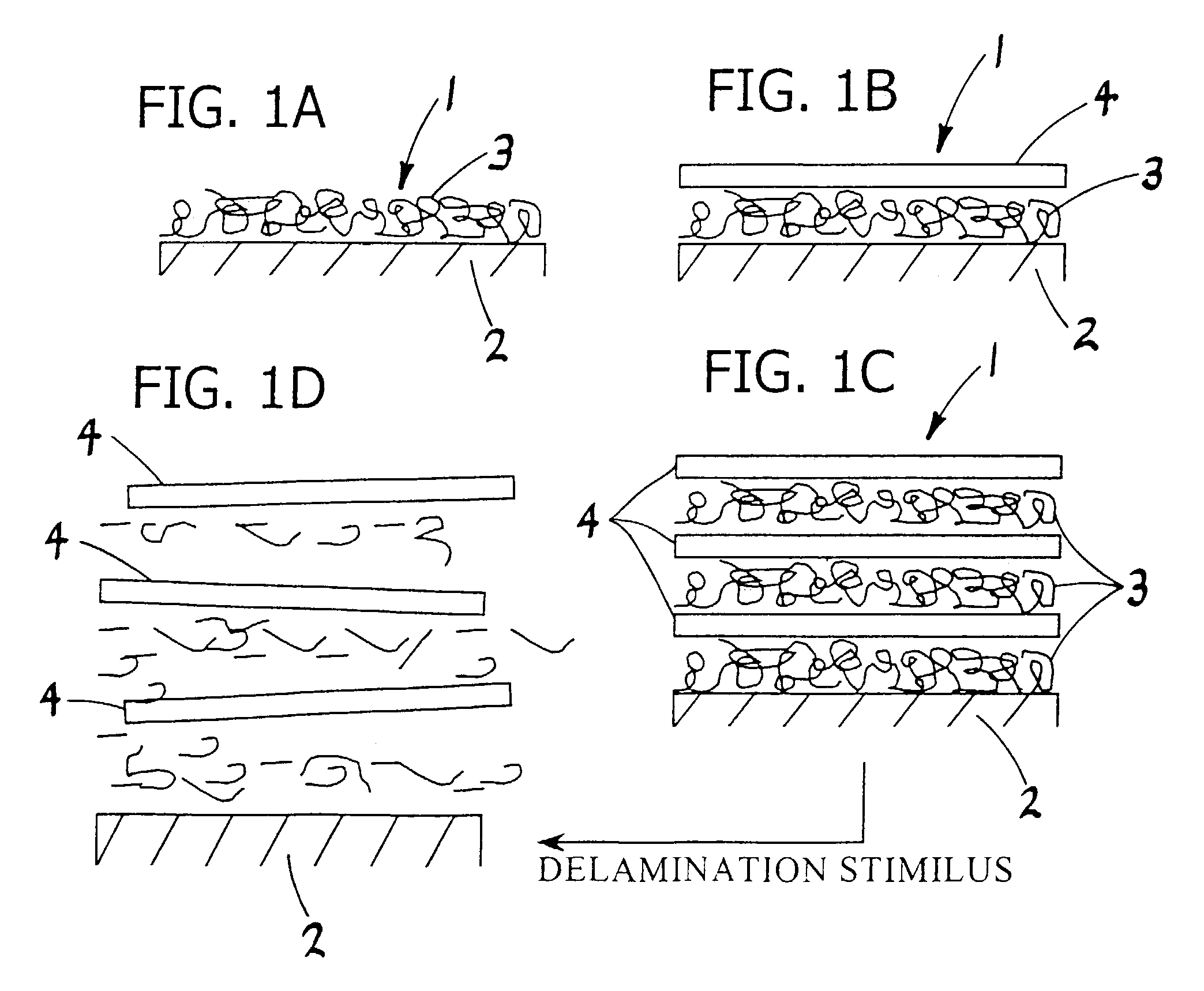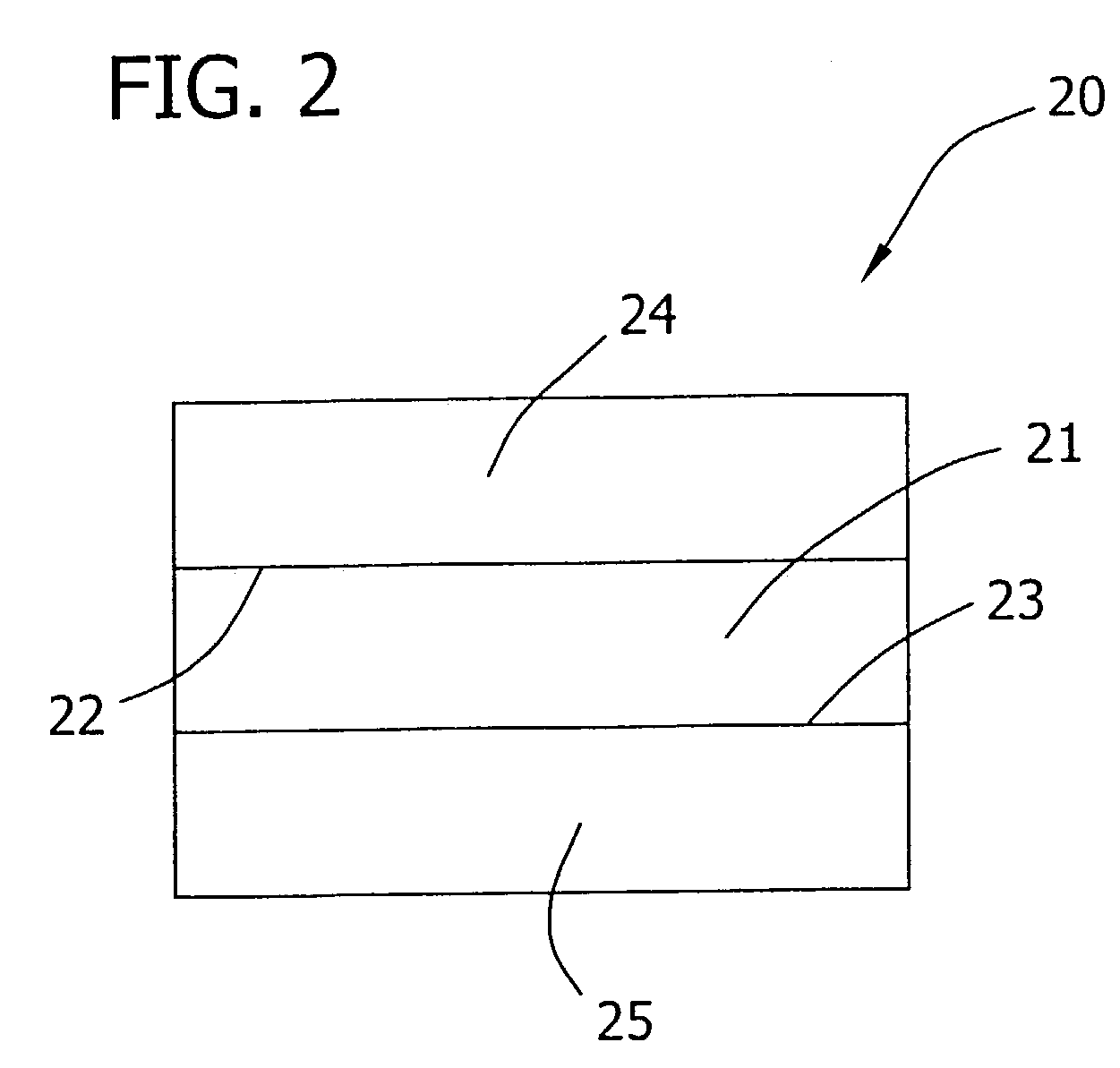Polyelectrolyte complex films for analytical and membrane separation of chiral compounds
a technology of polyelectrolyte complexes and compounds, applied in the direction of optically active compound separation, water/sewage treatment by ion exchange, synthetic resin layered products, etc., can solve the problems of low permeability, low permeability, and high labor intensity of chromatographic methods
- Summary
- Abstract
- Description
- Claims
- Application Information
AI Technical Summary
Problems solved by technology
Method used
Image
Examples
examples
A. Permeability and Selectivity Analysis of Chiral PEMUs
[0065]A study of chiral permeability and selectivity of PEMUs constructed of polyelectrolytes having L- and D-chiral forms. Specifically, PEMUs were constructed of the polypeptides poly(lysine) (PL) and poly(glutamic acid) (PGA), and of the polyelectrolytes poly(N-(S)-2-methylbutyl-4-vinyl pyridinium iodide) (PN(S)4VP) which is a chiral alkylated polypyridine and poly(styrene sulfonate) (PSS). Chemical drawings of the above polyelectrolytes are depicted in FIG. 3. The multilayers were constructed on rotating disk electrodes, which permitted precise flux measurements of electroactive probes according to an alternating exposure method that is well known in the art. See Farhat et al., J. Am. Chem. Soc. 125, 4627 (2003). The chiral probes used in this study were L- or D-ascorbic acid (the former is Vitamin C), 3-3(3,4-dihydroxyphenyl)-L / D-alanine (DOPA), and a chiral viologen (a geometric isomer, rather than an enantiomer). Chemica...
PUM
| Property | Measurement | Unit |
|---|---|---|
| Pore size | aaaaa | aaaaa |
| Pore size | aaaaa | aaaaa |
| Thickness | aaaaa | aaaaa |
Abstract
Description
Claims
Application Information
 Login to View More
Login to View More - R&D
- Intellectual Property
- Life Sciences
- Materials
- Tech Scout
- Unparalleled Data Quality
- Higher Quality Content
- 60% Fewer Hallucinations
Browse by: Latest US Patents, China's latest patents, Technical Efficacy Thesaurus, Application Domain, Technology Topic, Popular Technical Reports.
© 2025 PatSnap. All rights reserved.Legal|Privacy policy|Modern Slavery Act Transparency Statement|Sitemap|About US| Contact US: help@patsnap.com



